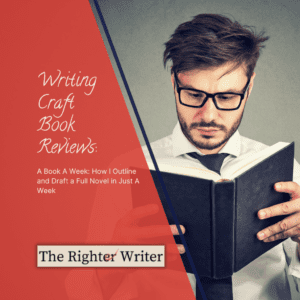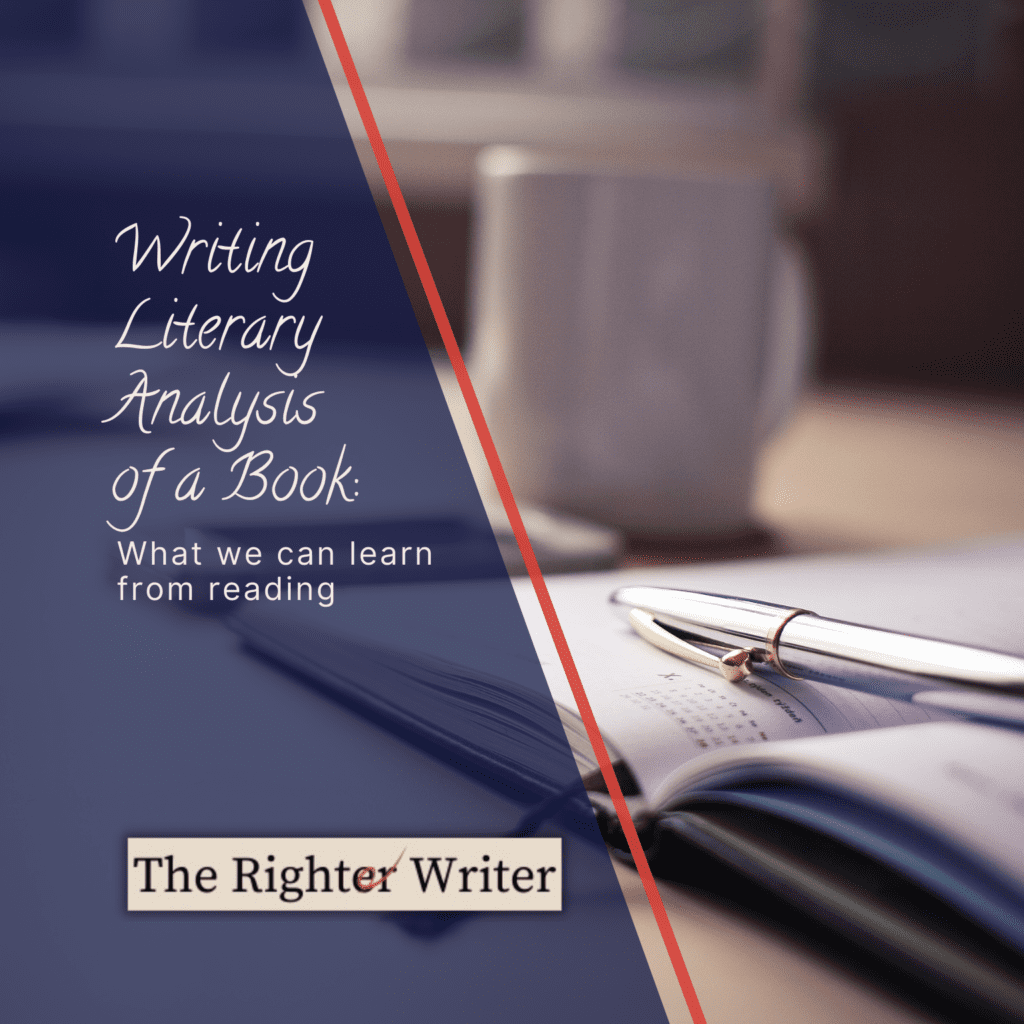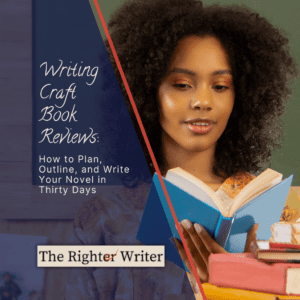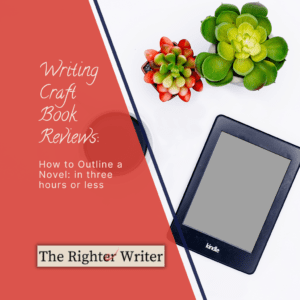
Writing Craft Book Reviews: A Book A Week
Fourth and last (for now!) in our series of book reviews featuring Kindle Unlimited books that explain ways to outline a novel. Let’s get ready for NaNoWriMo!
I'm an affiliate.
Some of the links on this page are affiliate links, but the opinions in my posts are my own, and I only mention products that I like and use myself. As an Amazon Associate, I earn from qualifying purchases. What that means is that if you click one of the links on my site and make a purchase, I might recieve compensation at no extra cost to you.
Writing comes from reading, and reading is the finest teacher of how to write.”
— Annie Proulx
“One day I will find the right words, and they will be simple.”
— Jack Kerouac
“Get it down. Take chances. It may be bad, but it’s the only way you can do anything really good.”
— William Faulkner
Can you look at these sentences and identify the two independent clauses? What about the conjunction that is linking them together?
A semicolon is another way to combine two simple sentences that are related to each other into one compound sentence.
“I am not at all in a humor for writing; I must write on until I am.”
— Jane Austen
“I can shake off everything as I write; my sorrows disappear, my courage is reborn.”
— Anne Frank
“Substitute ‘damn’ every time you’re inclined to write ‘very;’ your editor will delete it and the writing will be just as it should be.”
— Mark Twain

I am just getting over having Covid, so I’m finally out and about for the first time in two weeks. I didn’t get much writing done during that time (“Covid brain” is definitely a thing), but I did a lot of reading and listening to audiobooks.
Some books I read were just for entertainment, and some were nonfiction.
One book I read for a second time because I’m working on a literary analysis of it. It’s a novel in a genre that is pretty new to me, so I’m taking a closer look at the book.
Maybe you have vague memories (nightmares?) of writing literary analysis papers in high school or college.
When I was analyzing a text for school, there were strict rules and structures that I had to use in my papers, and I didn’t like the process much.
The good news about analyzing a novel as a writer is that it doesn’t matter what I do or how I do it—there isn’t anyone grading this—as long as I learn from the process.
Here are the steps that I follow when I am reading a novel to learn about the craft of writing.
If you want to understand how your favorite authors do what they do, I really recommend that you try this a few times. I think you’ll learn a lot.
Look at where the book is on the shelf. Is there a display with other books that are similar?
If you are buying the book on Amazon, Kindle Unlimited, or another large online book retailer, look for the “also bought” section of the page. What else are the people who bought this book buying? Have you read any of those books?
Next, look closely at the front cover of the book.
Sometimes the ebook cover differs from the print version, and the audiobook could be different yet. When you compare the various versions, how do they differ?
Finally, look at the description, blurb, and ad copy for the book. You might look at the book itself, the Amazon sales page, or the Goodreads page.
When you have looked at all these different elements, take a second to jot down some notes. It’s important to write your impressions before you read the book, because once you read it, you can’t unsee any mental connections that you made.
For instance, if you didn’t understand the title before you read the book, but halfway through the story, the main character uses the phrase, it would be easy to forget that you were ever confused about the title.
People give one- and two-star reviews to books that don’t live up to the promises that the title, cover, and back of the book have made.
Someone looking for a thriller might choose a cover that is dark—maybe a forest at night with a lake house in the far background.
Maybe there is a silhouette of a woman hiding behind a tree, while a man with a gun searches for her.
Maybe the tag line is, “He has been after her for years, but now there is nowhere left to run . . .” and the title is His Brother’s Wife.
Sounds like a great thriller novel, right?
Now imagine that the reader bought that book, but the story inside turns out to be a sweet romance novel where the woman’s husband has passed away.
Slowly, over the course of the novel, she admits to herself that she is in love with her brother-in-law, who has loved her from afar for years.
The novel may be a fantastic romance, but if the reader is expecting a thriller, they are going to be disappointed.
By looking closely at the packaging of the book and keeping good notes, you can go back after you have read it to see if the story delivered on its promises.

Finally, it’s time to read the book for enjoyment from beginning to end.
Don’t worry about looking for specific things, just read however you would normally read a novel.
First, write down the top three things you enjoyed about this novel and at least one thing that you didn’t like.
Reflect on your emotional reaction to the book; how do you feel about it? Don’t bother trying to justify your reactions at this point.
When you’ve finished writing your literary analysis, come back to these answers and see if you can figure out which concrete writing choices the author used to make you feel this way.
The title, cover, and description all gave you certain preconceived ideas. Now that you have read it, ask yourself:
Basically, did the novel fulfill the promises that it made with the packaging?
What tense is it written in? Present? Past? How would it change the tone of the story if it were in a different tense?
What about the point of view? Does the author use the third person (he/she) or the first person (I) narration? Can we see the story from just one person’s perspective, or are there two or more point of view characters?
Is the story told in chronological order, from beginning to end? Are there flashbacks or parallel timelines?
Does the author use any special literary forms, like inserting letters from the characters (epistolary), to tell the story?
How does each of these decisions affect your reading experience?
Try to imagine what the story would be like if you changed any of these—tense, point of view, story order, or literary form.
If you want to analyze the story form even more deeply, pick a different novel to read and compare.
Choose a novel that has a similar story, but is written in a different style, and see for yourself how these elements affect the feel of the story.
For instance, if you are reading an enemies-to-lovers romance where the point of view alternates from one of the pair of lovers to the other in each chapter, find another enemies-to-lovers romance that has a single point of view.
If your current book is a fantasy novel with a chosen-one main character and a quest format, and it’s told in the past tense, try to find the same chosen one’s quest story, but told in the present tense.
Reading the two books back-to-back will help you clarify for yourself what kinds of stories draw you, which may help you choose how to write your own projects.
Novelists work hard on their stories, sometimes taking years to finish and polish them, so you won’t understand every element the first or even second time you go through the novel, no matter how closely you read.
That’s why it helps to focus on one or two areas when you’re making this second pass.
Remember, after your first read-through when you wrote three things that you liked and one that you didn’t? You can use those notes to narrow down your focus.
If you loved how the setting cast such a long shadow over the story that it seemed like another character, maybe focus on how the author created that effect.
Maybe the author wove two timelines throughout the novel until they came together in a satisfying way at the end—that’s what you can take notes on during this pass.
I’m focusing on the characterization in the novel that I am analyzing right now, so I am going to use that as my example as I talk about what I can learn from reading the novel a second time.
Now, read the book that you are analyzing for a second time. This time, get a set of colored pencils, highlighters, and sticky notes.
This might hurt a bit if you, like most of us, were told never to write in a book, but there is really no way around it.
There is just no way to keep your thoughts and questions straight in your mind, you need to be able to write notes as they come to you.
As you are reading the book for a second time, stop on every page, paragraph, and line to ask yourself why: Why did the author choose this? What does it add to the story, and how would the story be different if the author had done things differently?
As I’m going through the novel with questions like these in mind, I pull out my highlighters.
About halfway through this particular novel, I realized I knew a lot about the main character, but I didn’t remember the author telling me (the reader) the information. Facts about the character were woven into the narrative so subtly that I didn’t notice, and I wanted to learn how to do that.
So, with several colors, I highlighted the information about the character in the text.
I used green for thoughts that the protagonist was having about himself, blue for things that other characters said about him, and pink for things that the author wrote in the narrative. As I was reading, I added yellow for parts where the protagonist had a memory or flashback that told me about his character. There were a lot of explanations of the character’s internal motivations, so I also added a red underline to differentiate the physical descriptions.
I might have gotten a feel for how the author was building his characters even without writing in the book, but using the different colors really brought the author’s techniques into perspective.
There were almost no instances where I highlighted the same color twice in a row. If a side character said something explaining the main character’s motivations (blue), then next it was a memory of the main character as a child that expanded on that (yellow) or the main character accepting or rejecting what the other character had said (green).
By highlighting, I could also see clearly how much text the author actually devoted to describing the character or his motivations. There was rarely more than one line highlighted at a time, and there were usually several pages or even chapters between descriptions.
I also noticed that I was highlighting and underlining throughout the entire book, all the way to the last chapter. The author didn’t describe the character once at the beginning and then keep the description static. Instead, he let the character’s physical description change as the internal goals and motivations shifted. As the reader, I was always learning about the protagonist, which made the character more real and alive.

One of the ways that I can practice these skills is to highlight one of my stories using the same colors and then compare the two.
Using the different colors to illustrate how my character descriptions are structured now will help me decide how I want to improve them.
What are you interested to learn from reading and analyzing your favorite novels?
Is it something you have tried before?
I would love to hear about your experiences in the comments!

I help authors, researchers, business people, students, and web marketers to polish their writing before they send it out into the world.

Fourth and last (for now!) in our series of book reviews featuring Kindle Unlimited books that explain ways to outline a novel. Let’s get ready for NaNoWriMo!

Third in our series of book reviews featuring Kindle Unlimited books that explain ways to outline a novel. Let’s get ready for NaNoWriMo!

Second in our series of book reviews featuring Kindle Unlimited books that explain ways to outline a novel. Let’s get ready for NaNoWriMo!

2 Responses
This is fascinating. I’m weird and highlighting in a book never works for me lol, but these are great things to think about while reading.
I get that! I have a friend who uses post-its, so he can take them off when he is done.